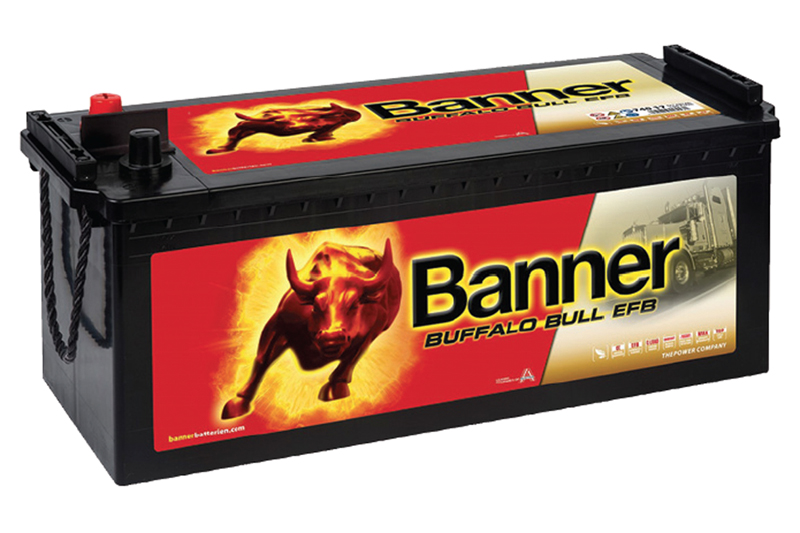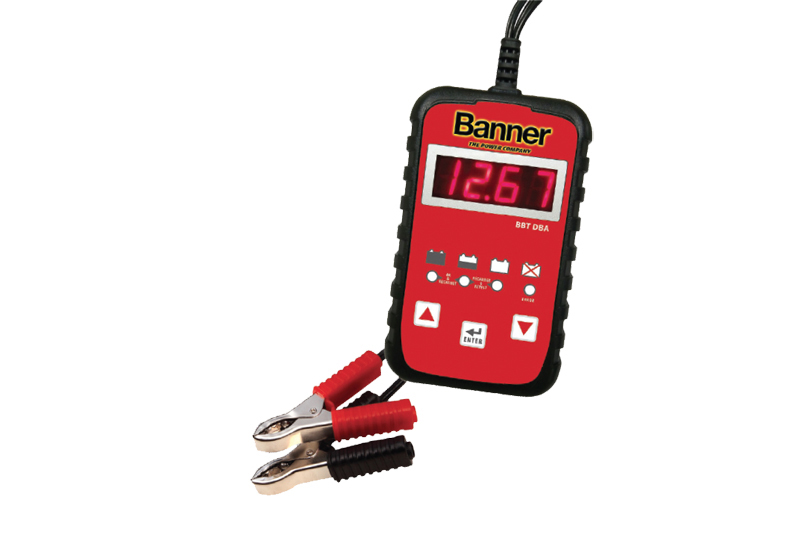
Retaining optimum battery power levels on commercial vehicles has never been more important. Andreas Bawart, CEO of Banner Batteries Commercial, explains why it is crucial to follow the company’s six-step ‘check and recharge’ ritual.
Not only are CVs facing higher frequencies of short distribution trips, irregular driving profiles, stop-and-go traffic, and daily cold starts, they are also required to accommodate electrical consumables, such as seats and in-cab heating, which all gradually reduce battery energy levels.
Truck batteries are discharged more frequently than cars, so they should be recharged externally at least twice annually. Should this not be the case, the open-circuit voltage in a 24V vehicle electrical system, which involves two 12V batteries connected in series, may fall from 25.44V to 24.60V or even lower, all with related negative consequences. Therefore, in order to ensure that maximum voltage outputs are maintained, which helps to avoid starting problems and reducing the incidence of unplanned failures, Banner has devised a sixpoint plan of action:
1. Before charging, the electrolyte level should always be checked. If necessary, the battery should be topped up with desalinated or distilled water to the acid level mark, or 15mm above the upper edge of the plates. During charging, the battery screws may not remain open, and it is best when they are screwed back in. This is not applicable to AGM batteries, however.
2. Obviously, inactive batteries are subject to discharge. Here, lead sulphate collects on the lead plates and hinders the current flow, resulting in a decline in both battery capacity and cold start performance. Therefore, devices such as the Banner Accucharger 10A/24V and the Accucharger PRO 25A should be used to keep the battery active and help prevent sulphation from occurring.
3. It is important to constantly monitor the battery’s charge level. The display provides up-to-date information regarding current power consumption and alarms the driver if, for example, the charge status is too low. This is particularly important in long-haul trucks, because they are not simply a means of transport, but instead often the workplace and home of the driver five days of the week.
4. Given that a drop in temperature from 20 to 18°C, for example, roughly halves battery capacity in Ah, battery charge status should be subject to constant surveillance, and additional electrical consumers should be used in moderation, especially when the vehicle is not in use.
5. Furthermore, electrical consumers should be shut down when no longer required. As a result, when the engine is switched off, battery current will only be employed for a refrigerator, tablet, computer, or sound system.
6. A suitable vehicle mode should always be employed once the engine is turned off and the parking mode actuated. This applies if the cab functions are not in use, but, should they be needed, a switch to the accommodation mode is necessary for as long as the cab functions are required.
Afterwards, the parking mode can be reactivated. Additional cab functions are available via the accessory mode, but care should be taken that this is also only utilised for a limited period, in order that battery power is not fully exhausted.
Play it safe!

When recharging, Banner recommends deploying chargers in line with battery capacity and charge status. Banner’s Accucharger 24V 10A Recovery is ideal for batteries with up to 240Ah that require frequent equalisation charging with open-circuit voltage of the individual batteries of >12.5V. The Banner Accucharger PRO 25A is recommended for batteries with up to 240Ah for recharging with open-circuit voltage of the individual batteries of <12.5V. As far as the serial connections in a 24V vehicle electrical system are concerned, in which two 12V batteries are connected in line, Banner states that both batteries should be of identical type, approximately the same age, and have an equal charge status.

In addition, the connecting cables must be dimensionally as short as possible. In the situation of a battery change, both batteries must always be substituted simultaneously, or at the very least the battery that is still functional should be removed, fully changed and then reinstalled with the new battery.








